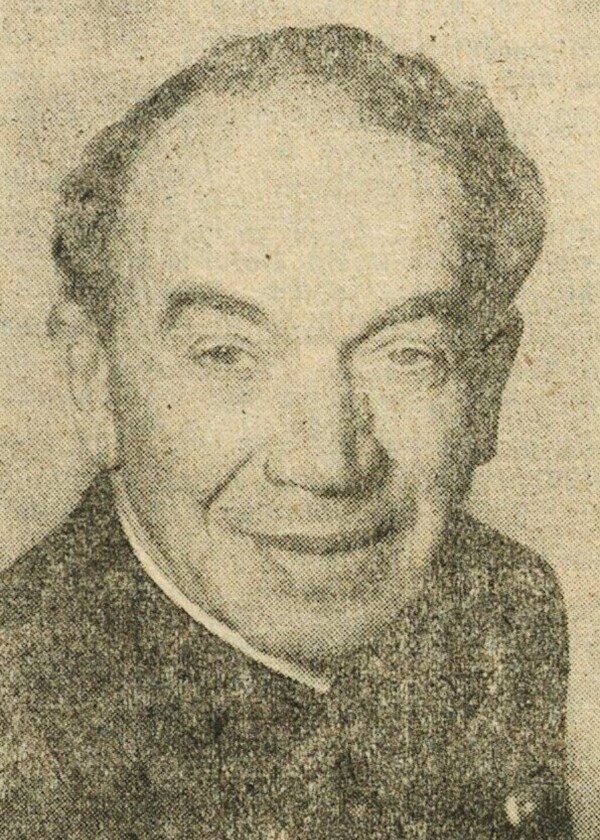Joseph August Lux

Joseph August Lux, in: Salzburger Nachrichten, 28.03.1947.
© Klimt Foundation, Vienna
The scholar, writer and art critic Joseph August Lux edited the illustrated magazine Hohe Warte for several years. He also wrote articles about the so-called “Beethoven Exhibition” of the Vienna Secession in 1902 and the “Kunstschau Wien” in 1908, both co-organized by Gustav Klimt.
Joseph August Lux, born in Vienna in 1871, studied art history and philology. He went on study trips to England, France and Germany. Upon his return to his hometown, he dedicated himself to literary activities. He also wrote for various German-language daily newspapers and art magazines, including Das Interieur and Deutsche Kunst und Dekoration. For the latter magazine he for instance wrote an article of several pages about the “XIV. Ausstellung der Vereinigung bildender Künstler Österreichs Secession” [14th Exhibition of the Association of Austrian Artists Secession”] – the so-called “Beethoven Exhibition.” In 1908, Lux was commissioned to write a report about the “Kunstschau Wien” for the same art magazine.
The magazine Hohe Warte
Between 1904 and 1908, Joseph August Lux edited an illustrated magazine. Hohe Warte – named presumably after the eponymous residential neighborhood in Vienna, which was popular with artists and construction companies – discussed various topics related to architecture, including city planning, the preservation of monuments, housing reforms or landscaping. Lux also convinced renowned representatives of the contemporary artistic and cultural scene to contribute to “his” magazine, including Joseph Hoffmann, Joseph Maria Olbrich, Hermann Muthesius and Otto Wagner.
Dresden, Munich and Salzburg
Joseph August Lux went to Germany in 1907, where he became the director of the School of Arts and Crafts in Hellerau, near Dresden, in order to “educate the working youth from dull manual labor towards artistic performance and design,” according to a report in the Salzburger Volkszeitung. Three years later he moved to Munich and worked primarily as a free-lance writer. After World War I, he again edited a magazine. After the “Anschluss” of Austria, Lux, who had ties to Austrofascism, was arrested and temporarily imprisoned at the Dachau concentration camp. He was largely banned from working as a writer until the end of World War II.
Joseph August Lux died in Salzburg In 1947. Late in life, he had also dedicated himself to poetry and painting, according to his obituary in the daily newspaper Salzburger Nachrichten.
Literature and sources
- DOEW. Dokumentationsarchiv des österreichischen Widerstandes. Joseph August Lux. www.doew.at/erinnern/fotos-und-dokumente/1938-1945/der-erste-dachau-transport-aus-wien-1-april-1938/lux-joseph-august (05/18/2020).
- Ruth Hanisch: Moderne vor Ort. Wiener Architektur 1889-1938, Vienna 2018.
- Salzburger Volkszeitung, 26.03.1947, S. 2.
- Salzburger Nachrichten, 28.03.1947, S. 4.
- Markus Kristan: Kunstschau Wien 1908, Vienna 2016, S. 224-225.
- Felix Czeike (Hg.): Historisches Lexikon Wien, Band 4, Vienna 1995, S. 120.
- Österreichische Akademie der Wissenschaften (Hg.): Österreichisches Biographisches Lexikon 1815–1950, Band 5, Vienna 1993, S. 381-382.
- Deutsche Kunst und Dekoration, Band 10 (1902), S. 475-518.
- Deutsche Kunst und Dekoration, Band 23 (1908/09), S. 33-61.
- Deutsche Kunst und Dekoration, Band 41 (1917/18), S. 390.

